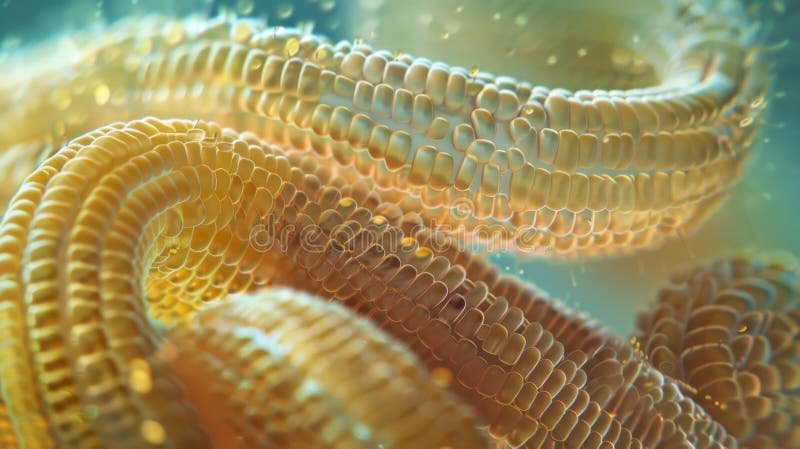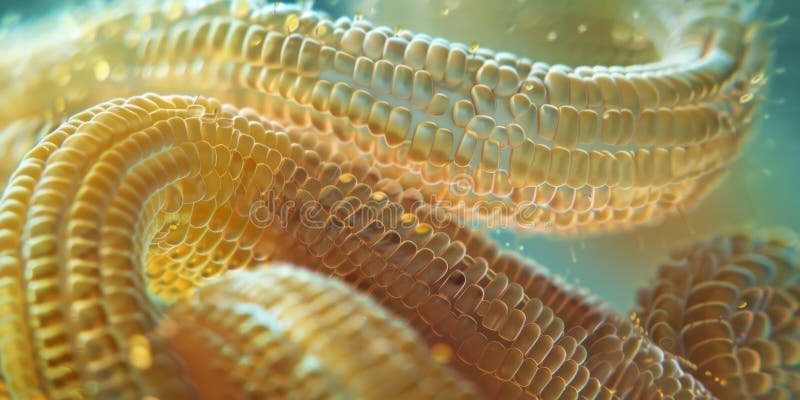
Tapeworms are long, flat parasites that live in the intestines of various hosts, like humans or animals. Picture them as unwelcome guests that have unpacked their bags and decided to stay indefinitely. But it’s not just their living situation that’s intriguing; it’s how they interact with other microfauna, like bacteria, fungi, and tiny invertebrates. By understanding these relationships, we can learn a lot about the delicate balance of life in ecosystems.
Let’s dive deeper into this fascinating topic and explore how tapeworms, despite being parasites, play essential roles in their ecosystems alongside other microfauna.
What Are Tapeworms, Anyway?
To put it simply, tapeworms are a type of parasitic flatworm belonging to the class Cestoda. They’ve got a unique body structure, mainly consisting of a head (called a scolex) that attaches to the host’s intestines and a series of segments known as proglottids. These segments can break off and release eggs, which can then infect other hosts—making tapeworms quite the survivalists.
You might be wondering about their diet. Well, tapeworms don’t have a digestive system like most organisms. Instead, they absorb nutrients directly through their skin from the host. Think of it as having a roommate who eats all your food but doesn’t chip in for groceries. This can lead to various health issues for the host, such as malnutrition, depending on how heavily infested they are.
But here’s the thing: tapeworms don’t just take; they also interact with the environment in ways we’re only beginning to understand. Their presence can influence microbial diversity and even impact the population of other organisms in their ecosystem.
The Role of Microfauna in Ecosystems
When we talk about microfauna, we’re looking at a whole universe of tiny creatures, most of which are invisible to the naked eye. This includes bacteria, protozoa, and tiny worms that live in soil or aquatic environments. These organisms play a vital role in nutrient cycling and energy flow within ecosystems.
Microfauna help decompose organic matter, turning it back into usable nutrients for plants and other organisms. They can also influence soil structure and health, which is crucial for agriculture. Think of microfauna as the unseen laborers of nature, constantly working behind the scenes to keep the ecosystem functioning smoothly.
So how do tapeworms fit into this delicate web? They interact with microfauna in a few interesting ways. For instance, they can change the composition of gut bacteria in their hosts, which can have ripple effects on the ecosystem as a whole.
How Tapeworms Affect Host Microbial Communities
Research shows that tapeworms influence the diversity of gut microbiota in their hosts. The presence of a tapeworm can create an environment that either promotes or hinders the growth of specific bacterial species. This is significant because a diverse microbiome is essential for the host’s health.
When a tapeworm is present, the nutrient absorption in the host changes. Imagine a buffet: if one guest is hogging all the good food, other guests might not get their fill. This can alter the types of bacteria that thrive in the host’s intestines. Some bacteria may flourish in the presence of a tapeworm, while others may dwindle as their nutrients are siphoned off.
This alteration can have far-reaching implications. For example, if certain beneficial bacteria decrease, the host may become more susceptible to diseases. Or perhaps, tapeworms might inadvertently create a niche for harmful bacteria, leading to infections.
Tapeworms and Their Hosts: A Complex Relationship
The relationship between tapeworms and their hosts is definitely not a simple case of predator and prey. Instead, it’s a complex balancing act. While tapeworms live off their hosts, they also have the potential to affect host behavior and physiology.
For instance, some studies suggest that infected hosts may become less active, potentially making them easier targets for predators. This can help maintain a balance in the larger food web. In this way, tapeworms can play a role in the ecosystem that extends beyond just their immediate parasitism.
It’s fascinating to think about how these little creatures can impact the lives of their hosts and, by extension, their environments. Their presence might promote the survival of other species by altering the dynamics of predator-prey relationships.
Interactions Between Tapeworms and Other Microfauna
In the larger ecosystem, tapeworms interact with various microfauna beyond just their hosts. For instance, they can act as vectors for certain bacteria and viruses. These microorganisms may hitch a ride on the tapeworm’s body or be introduced into the host through the tapeworm’s lifecycle, which can lead to new infections in the host.
This interplay raises questions about disease dynamics in ecosystems. If a tapeworm carries a harmful pathogen, it could transmit it to multiple hosts, affecting their health and the health of the ecosystem overall. The potential for spread illustrates how interconnected life forms are, even at the microscopic level.
Moreover, the waste produced by tapeworms can provide nutrients that benefit other organisms in the ecosystem. When tapeworms shed proglottids filled with eggs, they release nutrients back into the environment, promoting the growth of various microfauna. In a way, tapeworms contribute to nutrient cycling, creating a symbiotic relationship with other tiny organisms.
Conservation and Implications
Understanding how tapeworms interact with other microfauna has important implications for conservation. Many ecosystems are being threatened by pollution, habitat loss, and climate change. The unique relationships between organisms often act as indicators of ecosystem health.
If tapeworm populations decline due to ecological disturbances, it could signal shifts in host populations and microbial communities. This cascading effect can disrupt nutrient cycling and the overall balance of ecosystems, making it crucial to monitor such interactions.
Conservation efforts should not only focus on visible species but also consider the hidden layers of life, including parasites like tapeworms. Their role in the ecosystem should remind us that every organism, no matter how small or seemingly insignificant, has a part to play.
Tapeworms often get a bad rap for being parasites, but their interactions within ecosystems reveal a more complex story. They influence gut microbial communities, affect host behavior, and interact with other microfauna in ways that can shape entire ecosystems. By looking at the hidden world of these tiny creatures, we gain insight into the delicate balance of life on Earth.
So next time you think about tapeworms, remember they’re more than just unwelcome guests. They’re part of a larger, intricate web of life, and their interactions matter more than we often realize. Understanding these relationships helps us appreciate the beauty and complexity of the ecosystems we share the planet with.

